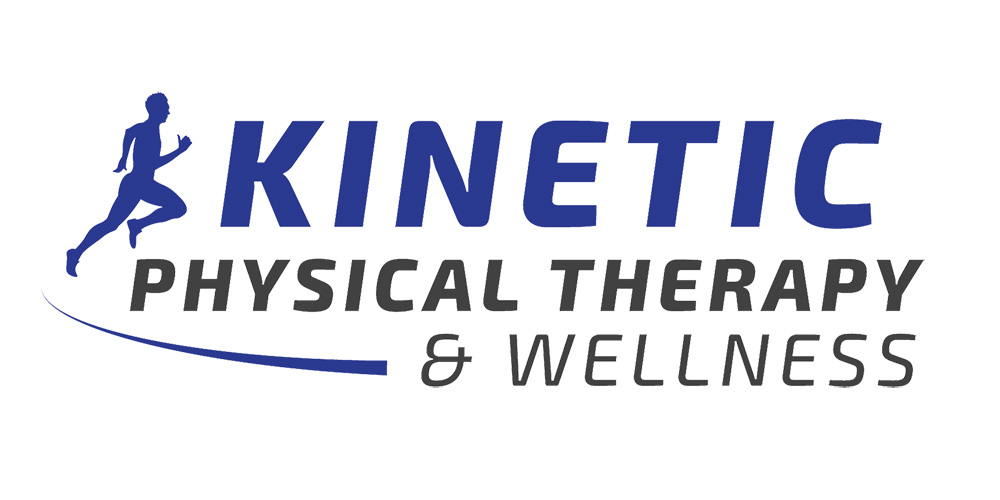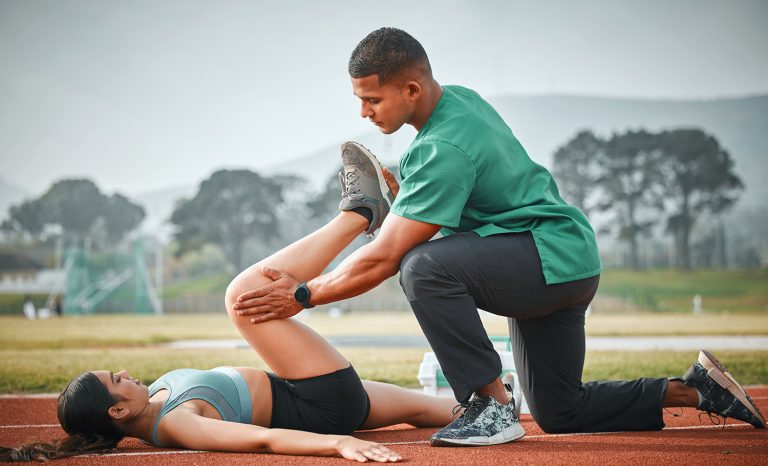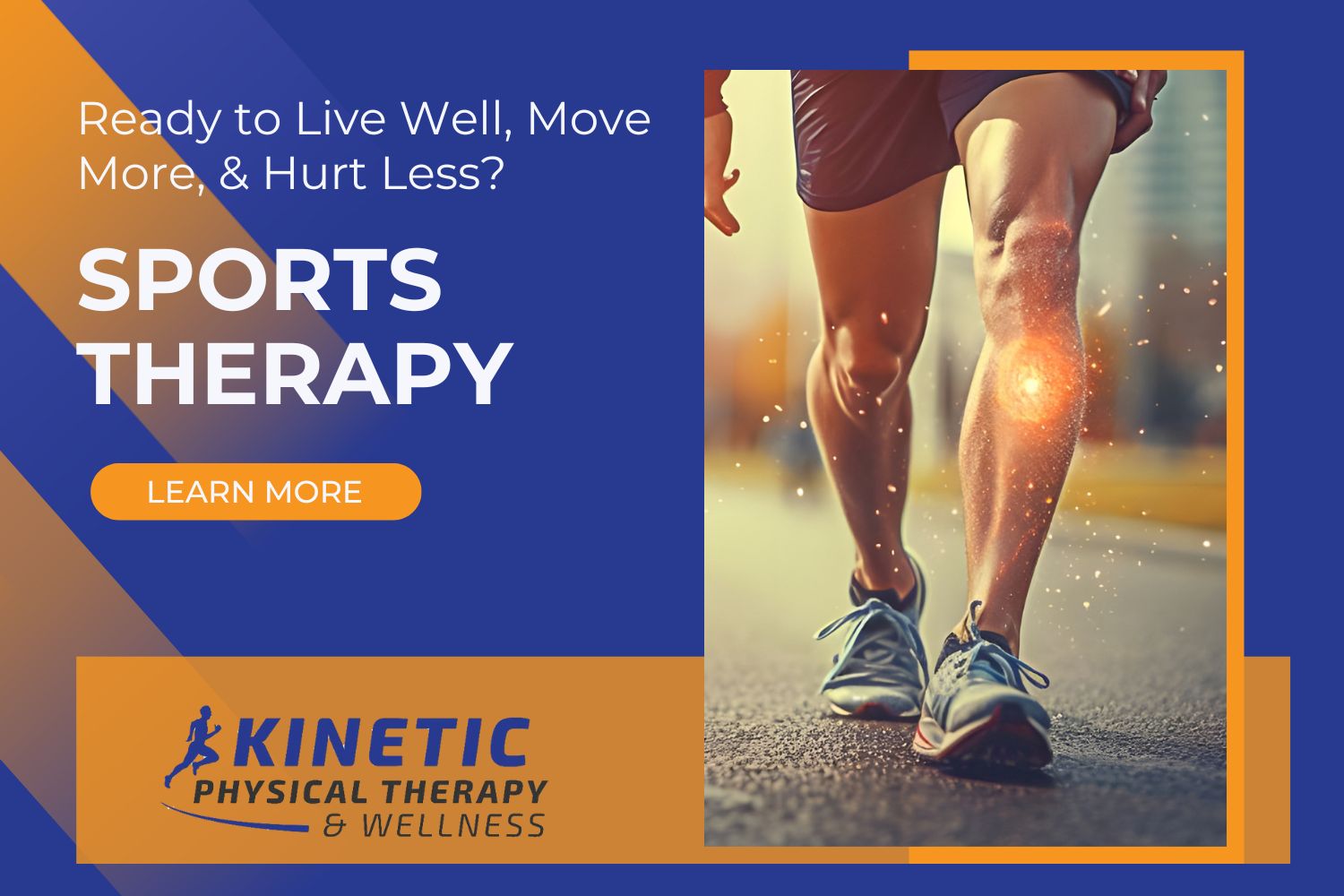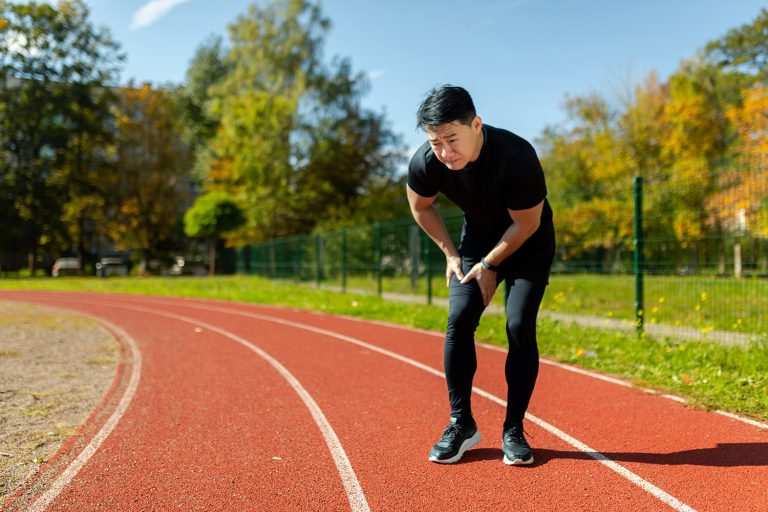
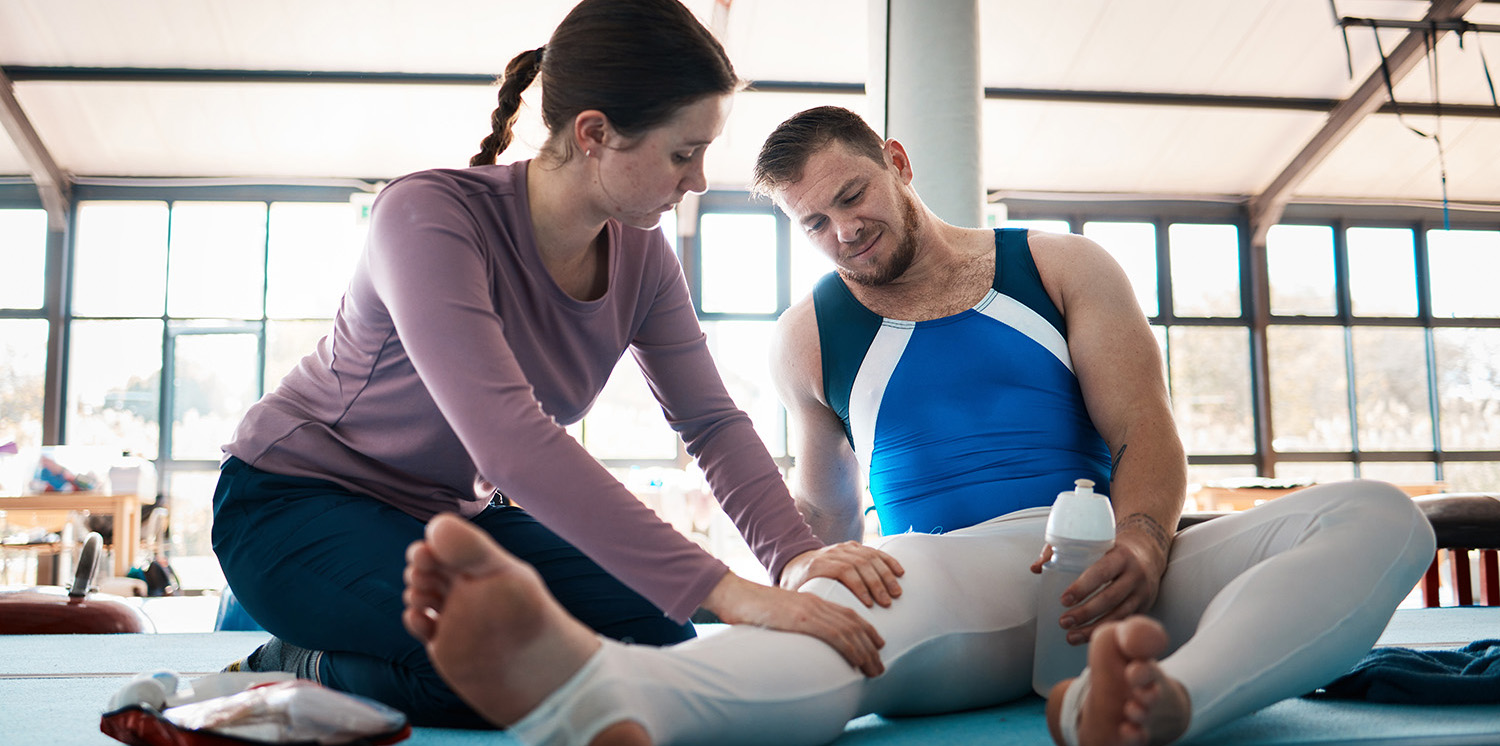
Bridging the Gap Between Sports Rehab and Peak Performance: What Most Athletes Overlook
Sports rehab is the first critical step in recovering from injury, but it’s not the final destination. Too often, athletes complete their rehabilitation protocols, regain baseline function, and prematurely return to their sport—only to experience re-injury or underperformance. What’s missing? A structured, intentional transition between sports rehab and high-level sports performance training. This “in-between” phase is frequently overlooked but absolutely essential for long-term success and resilience.
At Kinetic Physical Therapy and Wellness in Greenville, NC, we specialize in bridging this gap. We guide athletes through a comprehensive progression that doesn’t just restore movement—it enhances it, laying the groundwork for optimal performance post-injury.
Why the End of Sports Rehab Is Not the End of Recovery
Sports rehab focuses on reducing pain, restoring range of motion, and regaining basic strength and stability. While these are essential components, they represent only a portion of what’s needed for an athlete to return to peak form. Unfortunately, many athletes stop here and return to full competition without restoring sport-specific agility, speed, power, and mental readiness.
Think of it this way: completing sports rehab is like fixing a car’s engine after a breakdown. The car may start again, but without testing the brakes, aligning the wheels, and ensuring high-speed performance, you’re still at risk on the road. The same goes for athletes. Without targeted performance training after rehab, the risk of reinjury skyrockets.
Sports Rehab Is Only Step One—Performance Restoration Is Step Two
At Kinetic, we recognize that successful return to sport means going beyond traditional sports rehab. After an athlete regains foundational movement, we integrate sport-specific drills, strength and conditioning, and neuromuscular retraining into their plan. This transitional phase is carefully tailored to the athlete’s position, movement demands, and performance goals.
We ask: Can this athlete change direction explosively? Can they absorb impact under fatigue? Are their biomechanics efficient under competitive stress? If the answer is no, they’re not ready to return—no matter how “healed” they feel.
The Dangers of Skipping the Transition Phase
Failing to bridge sports rehab and sports performance properly often leads to reinjury. Soft tissues may be healed, but compensatory movement patterns developed during injury can remain, placing stress on other areas of the body. This leads to issues like Achilles tendonitis after an ACL injury or shoulder strain after returning from an elbow sprain.
Even if reinjury doesn’t occur immediately, athletes may experience plateaus in performance because their movement efficiency and strength haven’t been fully restored. That’s why this overlooked phase can make or break an athlete’s comeback season.
How Kinetic Bridges the Gap Between Sports Rehab and Performance
At Kinetic Physical Therapy and Wellness, our approach combines expert sports rehab and elite-level sports performance training in a seamless continuum. Once the athlete is cleared to progress beyond basic rehab, we reassess key factors such as:
- Balance and proprioception under dynamic conditions
- Sport-specific endurance and muscular control
- Joint loading capacity under resistance
- Sprint mechanics and change of direction techniques
We then design a transition program that includes progressive overload training, reactive agility drills, plyometrics, and strength conditioning—rebuilding the athlete’s complete movement system for real-game demands.
Personalization Makes All the Difference
Every sport, position, and athlete is different. A lineman returning from a knee injury requires a different progression than a soccer forward or a sprinter. Our transition programs are customized based on:
- The athlete’s sport and performance expectations
- Their injury history and movement assessment
- Strength deficits or asymmetries uncovered during sports rehab
- Their competitive timeline (off-season vs. in-season return)
This level of detail ensures a smooth return to play—not just cleared by a doctor, but fully prepared to compete.
Common Mistakes Athletes Make Post-Sports Rehab
One of the biggest errors is returning to full play too soon. Even if mobility and strength seem restored, the neuromuscular system needs time and targeted training to re-establish movement efficiency. Our team uses data-driven metrics and movement screens to identify whether an athlete is truly ready to advance.
Ignoring Weak Links
Injuries often leave behind weaknesses that aren’t addressed in standard sports rehab. These might be subtle—reduced hip mobility, delayed glute activation, or poor landing mechanics—but they can be the cause of future setbacks. Our integrated programming isolates and strengthens these areas before progressing to advanced drills.
Skipping Mental Conditioning
Injuries can shake an athlete’s confidence. Returning to sport too soon without mental readiness can create hesitation, fear, and ultimately, poor performance. Our team emphasizes not just physical readiness, but psychological resilience—ensuring athletes trust their bodies and compete with confidence.
Benefits of a Full Recovery-to-Performance Program
A structured transition from sports rehab to sports performance dramatically reduces the chance of re-injury. We rebuild biomechanics, correct imbalances, and restore performance at every level—not just where the injury occurred.
Maximized Athletic Output
Athletes who go through our full recovery process don’t just return to their previous level—they often surpass it. Why? Because we’re not just fixing injuries—we’re optimizing movement, power, and performance potential.
Long-Term Athletic Longevity
Investing in the transitional phase between sports rehab and peak performance extends an athlete’s career. The strength, mobility, and efficiency developed during this time protect against future injuries and support continued growth season after season.
Your Comeback Starts Here
Recovery doesn’t stop when the pain ends. If you want to return to competition stronger, faster, and more resilient, the transition from sports rehab to sports performance must be deliberate and strategic.
At Kinetic Physical Therapy and Wellness, we don’t just treat injuries—we help athletes thrive beyond recovery. Our expert team provides customized programs that bridge the gap and build better athletes, from rehab to record-breaking.
Why Choose Kinetic Physical Therapy and Wellness?
At Kinetic Physical Therapy and Wellness, we offer specialized treatment programs tailored to each patient’s unique needs. Our team of experienced therapists is dedicated to providing expert care through evidence-based techniques, personalized treatment plans, and state-of-the-art equipment.
🏃♂️ Ready to overcome pain and get back to doing what you love? Experience the difference of personalized Physical Therapy at Kinetic Physical Therapy and Wellness in Greenville, NC! Our expert therapists are committed to providing individualized care that targets your specific needs, whether you’re recovering from an injury, managing a chronic condition, or seeking to improve mobility. With our tailored treatment plans, you’ll be on the path to lasting recovery and optimal health. 🌟 Don’t let pain hold you back—schedule your Physical Therapy session today and take the first step toward a healthier, more active life!
Please Share
categories
Recent Posts

Bridging the Gap Between Sports Rehab and Peak Performance: What Most Athletes Overlook
Sports rehab is the first critical step in recovering from injury, but it’s not the final destination. Too often, athletes complete their rehabilitation protocols, regain baseline function, and prematurely return to their sport—only to experience re-injury or underperformance. What’s missing? A structured, intentional transition between sports rehab and high-level sports performance training. This “in-between” phase is frequently overlooked but absolutely essential for long-term success and resilience.
At Kinetic Physical Therapy and Wellness in Greenville, NC, we specialize in bridging this gap. We guide athletes through a comprehensive progression that doesn’t just restore movement—it enhances it, laying the groundwork for optimal performance post-injury.
Why the End of Sports Rehab Is Not the End of Recovery
Sports rehab focuses on reducing pain, restoring range of motion, and regaining basic strength and stability. While these are essential components, they represent only a portion of what’s needed for an athlete to return to peak form. Unfortunately, many athletes stop here and return to full competition without restoring sport-specific agility, speed, power, and mental readiness.
Think of it this way: completing sports rehab is like fixing a car’s engine after a breakdown. The car may start again, but without testing the brakes, aligning the wheels, and ensuring high-speed performance, you’re still at risk on the road. The same goes for athletes. Without targeted performance training after rehab, the risk of reinjury skyrockets.
Sports Rehab Is Only Step One—Performance Restoration Is Step Two
At Kinetic, we recognize that successful return to sport means going beyond traditional sports rehab. After an athlete regains foundational movement, we integrate sport-specific drills, strength and conditioning, and neuromuscular retraining into their plan. This transitional phase is carefully tailored to the athlete’s position, movement demands, and performance goals.
We ask: Can this athlete change direction explosively? Can they absorb impact under fatigue? Are their biomechanics efficient under competitive stress? If the answer is no, they’re not ready to return—no matter how “healed” they feel.
The Dangers of Skipping the Transition Phase
Failing to bridge sports rehab and sports performance properly often leads to reinjury. Soft tissues may be healed, but compensatory movement patterns developed during injury can remain, placing stress on other areas of the body. This leads to issues like Achilles tendonitis after an ACL injury or shoulder strain after returning from an elbow sprain.
Even if reinjury doesn’t occur immediately, athletes may experience plateaus in performance because their movement efficiency and strength haven’t been fully restored. That’s why this overlooked phase can make or break an athlete’s comeback season.
How Kinetic Bridges the Gap Between Sports Rehab and Performance
At Kinetic Physical Therapy and Wellness, our approach combines expert sports rehab and elite-level sports performance training in a seamless continuum. Once the athlete is cleared to progress beyond basic rehab, we reassess key factors such as:
- Balance and proprioception under dynamic conditions
- Sport-specific endurance and muscular control
- Joint loading capacity under resistance
- Sprint mechanics and change of direction techniques
We then design a transition program that includes progressive overload training, reactive agility drills, plyometrics, and strength conditioning—rebuilding the athlete’s complete movement system for real-game demands.
Personalization Makes All the Difference
Every sport, position, and athlete is different. A lineman returning from a knee injury requires a different progression than a soccer forward or a sprinter. Our transition programs are customized based on:
- The athlete’s sport and performance expectations
- Their injury history and movement assessment
- Strength deficits or asymmetries uncovered during sports rehab
- Their competitive timeline (off-season vs. in-season return)
This level of detail ensures a smooth return to play—not just cleared by a doctor, but fully prepared to compete.
Common Mistakes Athletes Make Post-Sports Rehab
One of the biggest errors is returning to full play too soon. Even if mobility and strength seem restored, the neuromuscular system needs time and targeted training to re-establish movement efficiency. Our team uses data-driven metrics and movement screens to identify whether an athlete is truly ready to advance.
Ignoring Weak Links
Injuries often leave behind weaknesses that aren’t addressed in standard sports rehab. These might be subtle—reduced hip mobility, delayed glute activation, or poor landing mechanics—but they can be the cause of future setbacks. Our integrated programming isolates and strengthens these areas before progressing to advanced drills.
Skipping Mental Conditioning
Injuries can shake an athlete’s confidence. Returning to sport too soon without mental readiness can create hesitation, fear, and ultimately, poor performance. Our team emphasizes not just physical readiness, but psychological resilience—ensuring athletes trust their bodies and compete with confidence.
Benefits of a Full Recovery-to-Performance Program
A structured transition from sports rehab to sports performance dramatically reduces the chance of re-injury. We rebuild biomechanics, correct imbalances, and restore performance at every level—not just where the injury occurred.
Maximized Athletic Output
Athletes who go through our full recovery process don’t just return to their previous level—they often surpass it. Why? Because we’re not just fixing injuries—we’re optimizing movement, power, and performance potential.
Long-Term Athletic Longevity
Investing in the transitional phase between sports rehab and peak performance extends an athlete’s career. The strength, mobility, and efficiency developed during this time protect against future injuries and support continued growth season after season.
Your Comeback Starts Here
Recovery doesn’t stop when the pain ends. If you want to return to competition stronger, faster, and more resilient, the transition from sports rehab to sports performance must be deliberate and strategic.
At Kinetic Physical Therapy and Wellness, we don’t just treat injuries—we help athletes thrive beyond recovery. Our expert team provides customized programs that bridge the gap and build better athletes, from rehab to record-breaking.
Why Choose Kinetic Physical Therapy and Wellness?
At Kinetic Physical Therapy and Wellness, we offer specialized treatment programs tailored to each patient’s unique needs. Our team of experienced therapists is dedicated to providing expert care through evidence-based techniques, personalized treatment plans, and state-of-the-art equipment.
🏃♂️ Ready to overcome pain and get back to doing what you love? Experience the difference of personalized Physical Therapy at Kinetic Physical Therapy and Wellness in Greenville, NC! Our expert therapists are committed to providing individualized care that targets your specific needs, whether you’re recovering from an injury, managing a chronic condition, or seeking to improve mobility. With our tailored treatment plans, you’ll be on the path to lasting recovery and optimal health. 🌟 Don’t let pain hold you back—schedule your Physical Therapy session today and take the first step toward a healthier, more active life!
Please Share
